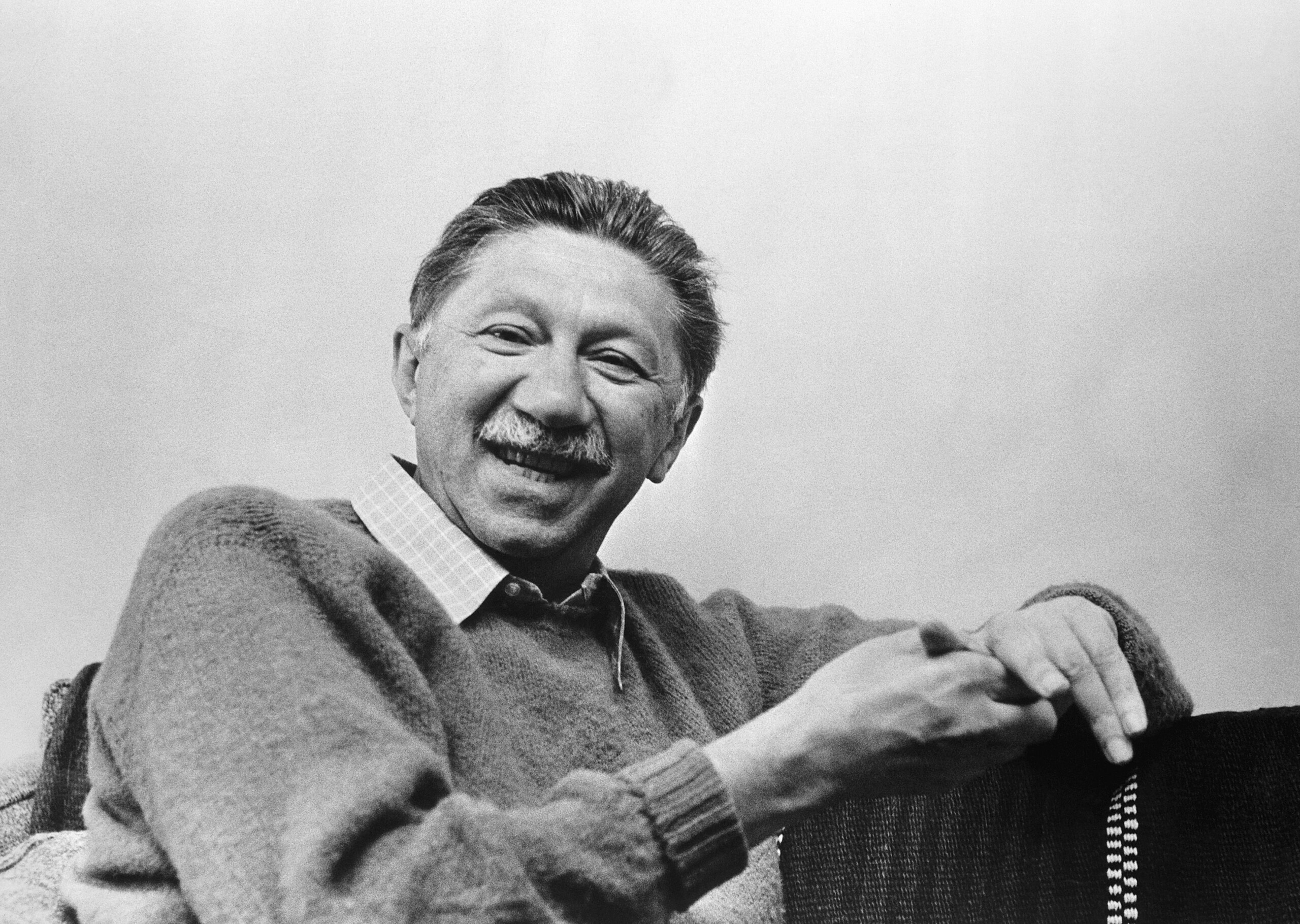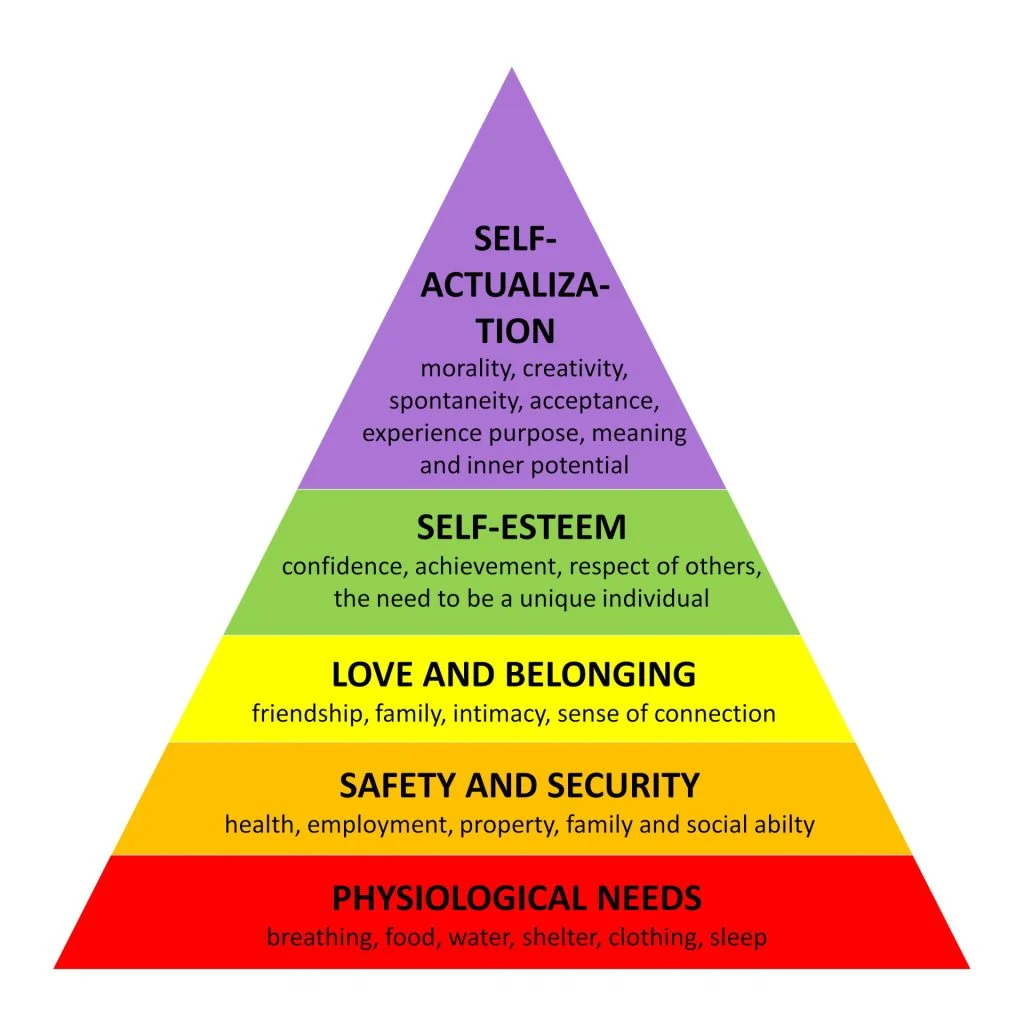An Introduction to Abraham Maslow
His Life, Theories, and Marketing Lessons
Understanding Abraham Maslow’s theories on human motivation offers a roadmap for marketers to connect with audiences on a deeper, more impactful level. This article aims to unpack Maslow’s hierarchy of needs and translate his insights into actionable marketing strategies.
Whether you aim to build trust with consumers, create emotional connections, or position your product/service to inspire self-actualisation, this guide will help you align your messaging with the motivations driving your target audience. Hopefully you will gain some insight to craft campaigns that resonate not just with consumers’ desires but with their aspirations and values.
The Marketing Made Clear Podcast
This article features content from the Marketing Made Clear Podcast – check it out on all good platforms.
Brief Biography of Abraham Maslow
Abraham Harold Maslow (1908–1970) was an American psychologist renowned for his groundbreaking work in humanistic psychology. Born in Brooklyn, New York, to Jewish immigrants from Russia, Maslow’s early life was shaped by cultural dissonance and academic curiosity. A enthusiastic and devout reader, he pursued his studies at the City College of New York before transferring to the University of Wisconsin, where he earned a BA, MA, and PhD in psychology. Under the mentorship of Harry Harlow, known for his work on attachment and social behaviour in primates, Maslow developed a deep interest in human motivation and potential.
Maslow’s career spanned academia and research. He taught at Brooklyn College and later at Brandeis University, where he refined his theories on human behaviour and self-actualisation.
As a pioneer of humanistic psychology – a movement that focuses on individual potential and self-growth – Maslow challenged the deterministic views of psychoanalysis and behaviourism, advocating for a more optimistic view of human nature.

Maslow’s Theories: A Human-Centric Perspective
Maslow’s work centred on understanding what drives human behaviour and motivation. His theories, while rooted in psychology, have influenced disciplines ranging from education to business and marketing. At the heart of his contributions lies the theory of the hierarchy of needs.
The Hierarchy of Needs
Maslow’s hierarchy of needs, introduced in his seminal 1943 paper “A Theory of Human Motivation” and later expanded in his book Motivation and Personality (1954), outlines a five-tier model of human needs, often depicted as a pyramid. This framework suggests that individuals are motivated to fulfil basic needs before progressing to higher-order needs.
The Five Levels of the Hierarchy:
- Physiological Needs: These are the fundamental requirements for survival, such as food, water, shelter, and sleep. Maslow posited that until these needs are met, individuals cannot focus on higher-level aspirations.
- Safety Needs: Once physiological needs are satisfied, individuals seek security and stability. This encompasses physical safety, financial stability, health, and protection from threats.
- Love and Belonging: Social connections become a priority at this level. Humans have an inherent desire for relationships, affection, and a sense of belonging—whether within families, friendships, or communities.
- Esteem Needs: Esteem is divided into two categories: self-esteem (confidence, independence) and external recognition (status, respect from others). Fulfilment of these needs bolsters one’s sense of accomplishment and worth.
- Self-Actualisation: The pinnacle of the hierarchy, self-actualisation, refers to the realisation of one’s full potential. This includes pursuing personal growth, creativity, and meaningful goals. Maslow described this as “what a man can be, he must be.”

Expanding the Hierarchy
In later years, Maslow introduced additional levels beyond self-actualisation, including self-transcendence. This level focuses on altruism and contributing to a cause greater than oneself, highlighting a more collective dimension to human motivation.
Maslow emphasised that the hierarchy is not rigid. Individuals may move between levels depending on circumstances, and the fulfilment of needs is dynamic rather than linear.
Lessons for Marketers from Maslow’s Hierarchy of Needs
Maslow’s hierarchy provides a valuable lens through which marketers can understand consumer behaviour. By aligning products, services, and campaigns with the specific needs of their target audience, brands can foster deeper connections and drive engagement.
1. Address Basic Needs to Establish Trust
For products or services addressing physiological and safety needs, functionality and reliability are paramount. Brands like water purifiers, insurance providers, or health food companies often focus on these foundational needs. For example, campaigns for bottled water highlight purity and hydration, while home security companies emphasise peace of mind.
The success of brands like Nestlé’s bottled water can be attributed to their ability to convey purity, safety, and accessibility, addressing consumers’ core physiological needs.
2. Create Emotional Connections at the Social Level
Products that tap into the need for love and belonging resonate with consumers on a personal level. Social media platforms, for instance, thrive by fostering community and connection. Similarly, brands like Coca-Cola’s “Share a Coke” campaign personalise the product to encourage social bonding and emotional attachment.
By allowing consumers to find bottles with their friends’ or family members’ names, Coca-Cola transformed an everyday purchase into a moment of connection, fulfilling social needs.
3. Boost Confidence by Aligning with Esteem Needs
Luxury brands, fitness services, and personal development products often target esteem needs. These brands position themselves as aspirational, helping consumers feel accomplished, confident, and valued. Effective messaging focuses on empowerment and exclusivity.
Apple’s marketing consistently conveys innovation and sophistication, appealing to consumers who seek status and self-expression through cutting-edge technology.
4. Inspire Through Self-Actualisation
Brands that align with personal growth, creativity, and purpose can appeal to consumers striving for self-actualisation. Content that inspires, educates, or challenges audiences to achieve their potential often resonates deeply. Companies like TED, through their “Ideas Worth Spreading” tagline, position themselves as enablers of personal and intellectual growth.
Nike’s “Just Do It” campaign embodies the essence of self-actualisation, motivating individuals to overcome challenges and achieve greatness.
5. Highlight Self-Transcendence for Social Impact
As modern consumers increasingly value sustainability and ethical practices, brands that champion social causes align with self-transcendence. Communicating a commitment to making a positive difference – whether through environmental initiatives or community impact – fosters loyalty and trust.
Patagonia’s commitment to environmental conservation resonates with consumers who aspire to contribute to a greater cause, aligning with self-transcendence.

Applying Maslow’s Theory in Modern Marketing
Maslow’s hierarchy remains relevant in today’s marketing landscape, particularly in the era of personalisation and consumer-centric strategies. Here’s how marketers can apply his insights:
-
Segmentation: Identify which level of the hierarchy your audience primarily operates within and tailor messaging accordingly. For instance, young professionals might prioritise esteem needs, while retirees may focus on safety and security.
-
Emotional Branding: Leverage emotional storytelling to align with higher-level needs like love, esteem, or self-actualisation.
-
Content Marketing: Develop content that educates and inspires, helping consumers fulfil their self-actualisation goals.
-
Social Responsibility: Showcase ethical practices and sustainability efforts to connect with self-transcendent consumers.
Conclusion
Abraham Maslow’s theories on human motivation offer profound insights into consumer behaviour. By understanding the hierarchy of needs, marketers can craft strategies that resonate on a deeper level, meeting consumers where they are and guiding them towards their aspirations. Whether addressing basic needs or inspiring self-transcendence, Maslow’s legacy continues to shape how brands build meaningful connections in an ever-evolving marketplace.


